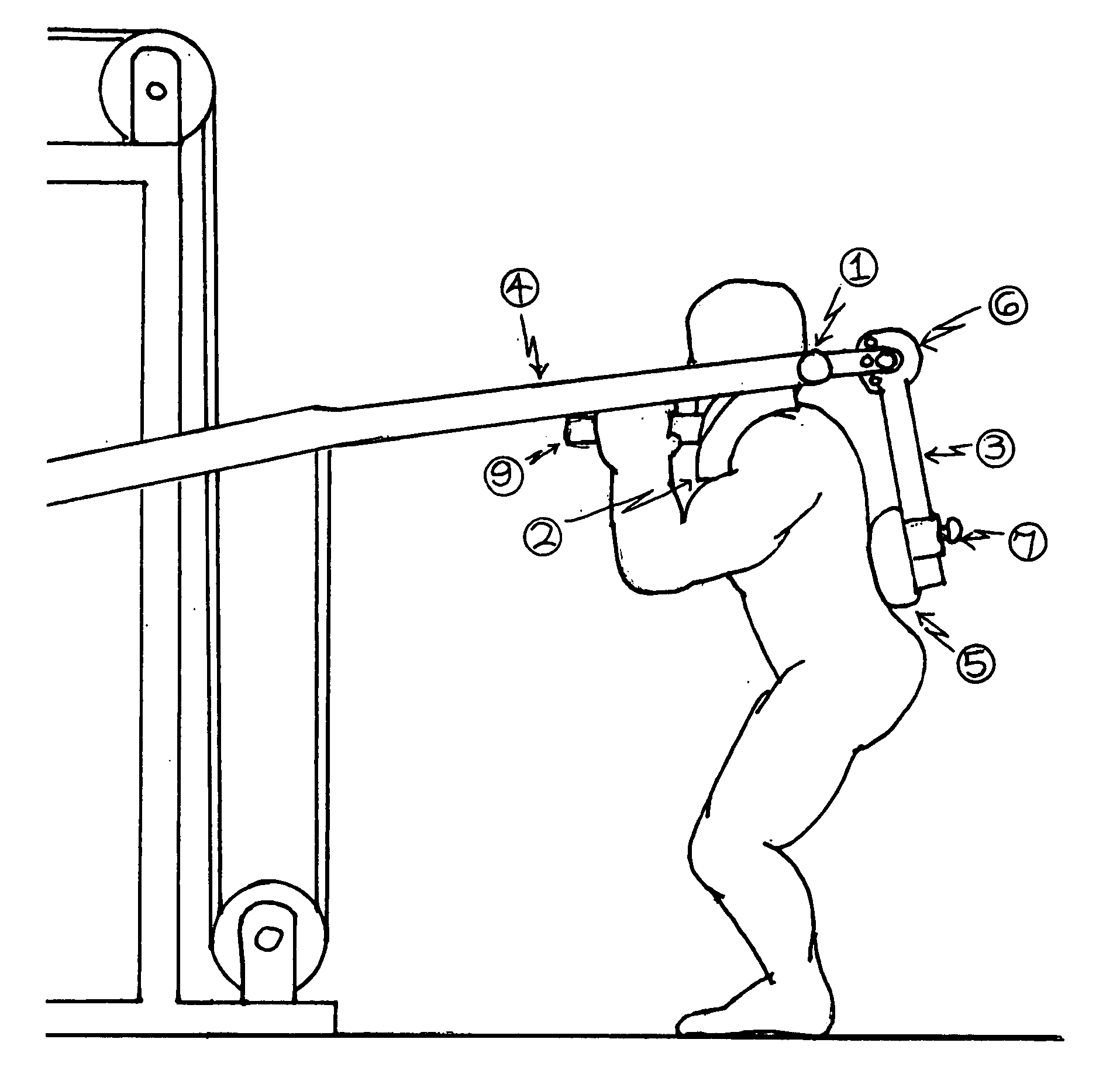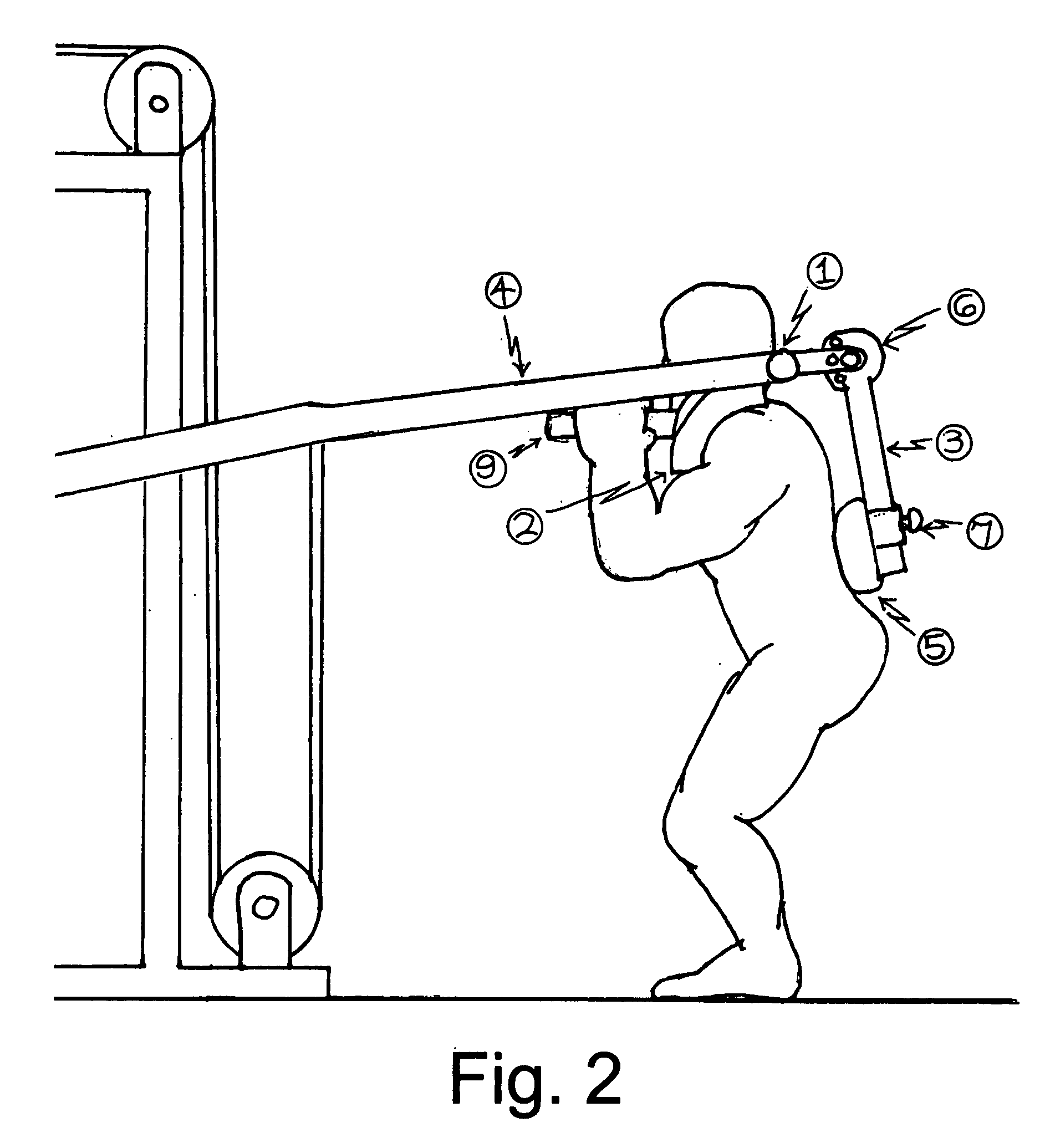Apparatus to maintain spinal alignment during the squat exercise
a technology of squat exercise and apparatus, which is applied in the direction of sport apparatus, gymnastic exercise, weights, etc., to achieve the effect of preventing lumbar spine flexion and distributing load on the trunk
- Summary
- Abstract
- Description
- Claims
- Application Information
AI Technical Summary
Benefits of technology
Problems solved by technology
Method used
Image
Examples
Embodiment Construction
[0012] Referring to the drawings, wherein the reference numerals throughout both drawings refer to like parts on each drawing. The rotating central pivots, 1, are actually two like members, one on each side. As shown in FIG. 1, each rotating central pivot, 1, consists of first, a cylindrical sleeve attached on one end to a metal bracket, 10, with arms of the bracket extending out in both directions from the attachment point of the sleeve. The rotating central pivot, 1, is also comprised of a metal shaft or axle which is contained within the sleeve. As shown in FIG. 1, the shaft or axle which extends out of each rotating central pivot, 1, extends away from the sleeve and terminates onto and rigidly affixes to the resistance application lever, 4. In this preferred embodiment, the resistance for the performance of the squat exercise is delivered through the resistance application lever, 4, such that a weight or resistance that is applied in a downward direction to the resistance arm le...
PUM
 Login to View More
Login to View More Abstract
Description
Claims
Application Information
 Login to View More
Login to View More - R&D
- Intellectual Property
- Life Sciences
- Materials
- Tech Scout
- Unparalleled Data Quality
- Higher Quality Content
- 60% Fewer Hallucinations
Browse by: Latest US Patents, China's latest patents, Technical Efficacy Thesaurus, Application Domain, Technology Topic, Popular Technical Reports.
© 2025 PatSnap. All rights reserved.Legal|Privacy policy|Modern Slavery Act Transparency Statement|Sitemap|About US| Contact US: help@patsnap.com



